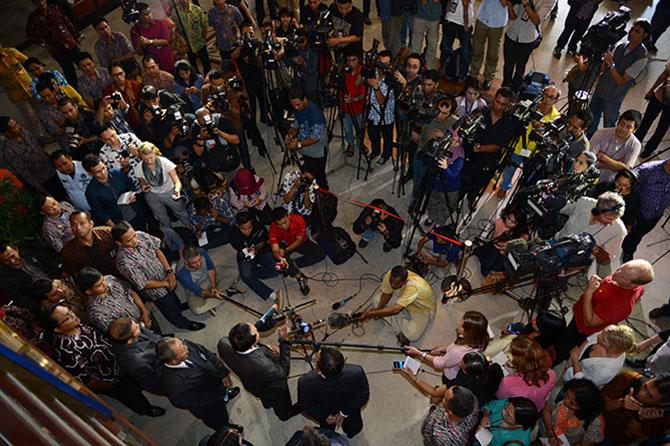
This was not just an attack on the sensationalist tabloid press. The study quoted both Australian and Indonesian political leaders who claimed the portrayal of events by the national broadsheet newspapers and mainstream television media (and the ABC in particular) was “one of the concerns about the bilateral relationship.” The report led the former Indonesian ambassador to Australia, Wiryono Sastrohandoyo, to suggest that “misperceptions and misunderstandings are hindering the full flowering of the bilateral relationship,” due largely to “the [Australian] mass media that mitigate against closer ties, no matter how closely the two governments may be working together.”
Along with politicians, academics have also accused the Australian news media of creating misperceptions in their portrayal of Indonesia. Senior scholars of Australia-Indonesia relations have made the point of stressing the importance of the media. Australian academics have continued this argument, claiming that the media, not government policy, has played a significant role in shaping public opinion. Many scholars writing about the Australian news media in Asia saw this problem as unique to Australian reporting of Indonesia. One of the most compelling cases for this argument was the Schapelle Corby courtroom dramas and the general movement in Australia to “Free Schapelle” from the unfairness of the Indonesian justice system and the apparent miserable conditions of a Bali prison.
John Schwartz, in his analysis of the media’s coverage of the event, wrote in Metro Magazine in 2005: “The lesson to be learned from the media coverage of the Schapelle Corby case is that commercial media outlets play a very active role in setting agendas, shaping public opinion and encouraging strong reactions. The public outrage which came after the guilty verdict was announced, including the incident at the Indonesian Embassy and the attacks on Indonesia’s legal system, has in the short term at least, worked to sour Australia's diplomatic relations with Indonesia.”
The story contributed to Indonesia being the country that received the most coverage on Australian television in 2005, as 18.42 percent of all foreign news reports were about the country. A total of 1.7 million viewers tuned to the live coverage of the verdict on the Nine and Seven television networks. The commercial media’s fascination with the Corby case encouraged the public outrage that came after the guilty verdict was announced, including protests at the Indonesian Embassy in Canberra and public denouncements of Indonesia’s legal system, which soured Australia's diplomatic relations with Jakarta.
In the case of the Corby trial, the attention it received at home highlighted the ability of the commercial media to employ “parachute” journalists who operated under strict instructions from editors to play an active role in setting agendas, rather than the resident Jakarta correspondents. This was to the detriment of resident correspondents who believe the Corby story was sensationalized. For example, The Australian’s Stephen Fitzpatrick argued that there were problems with journalists from Australia parachuting in and reporting in Denpasar. “Reporters pitching up at Denpasar local court can be a problem because it is physically so easy to do, just a few hours’ flight, and you’ve been court reporting for the past five years in Sydney, except the rules have all changed and if you don’t know that everything is slightly different, you will get it all wrong,” he said. “That happens regularly. Court reporting here is just so different to court reporting in Australia.”







%20resized.png)
